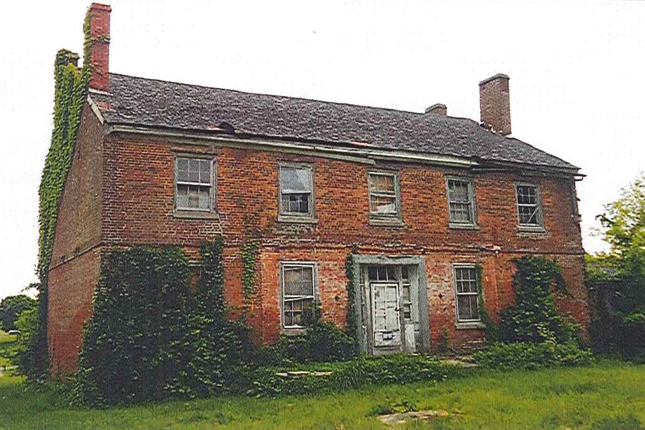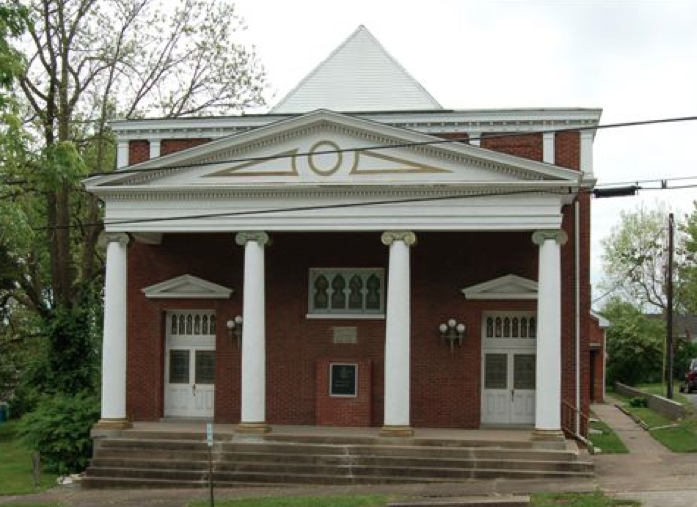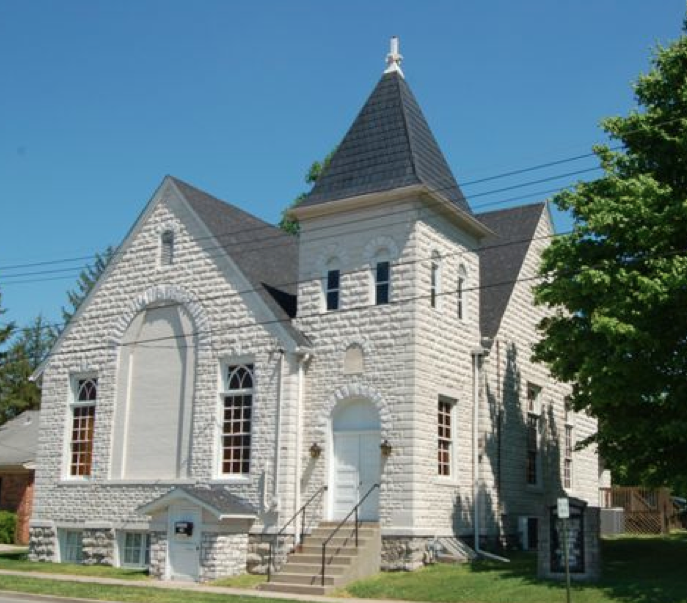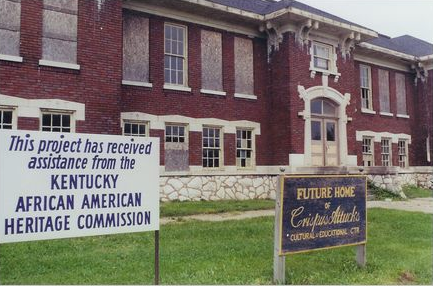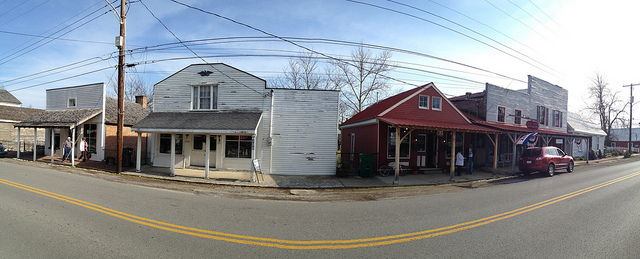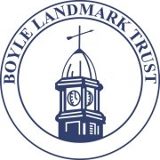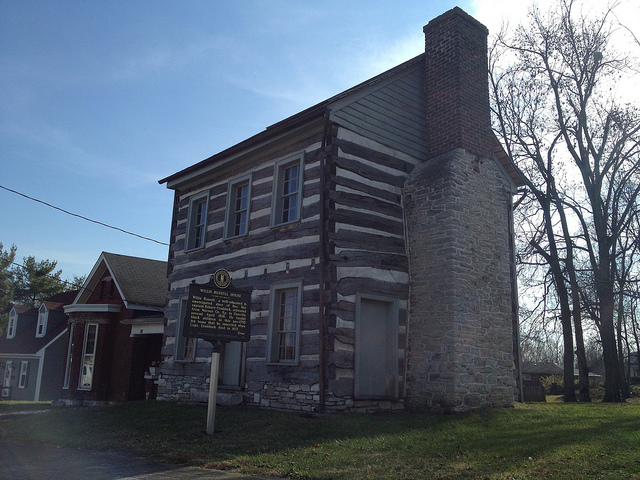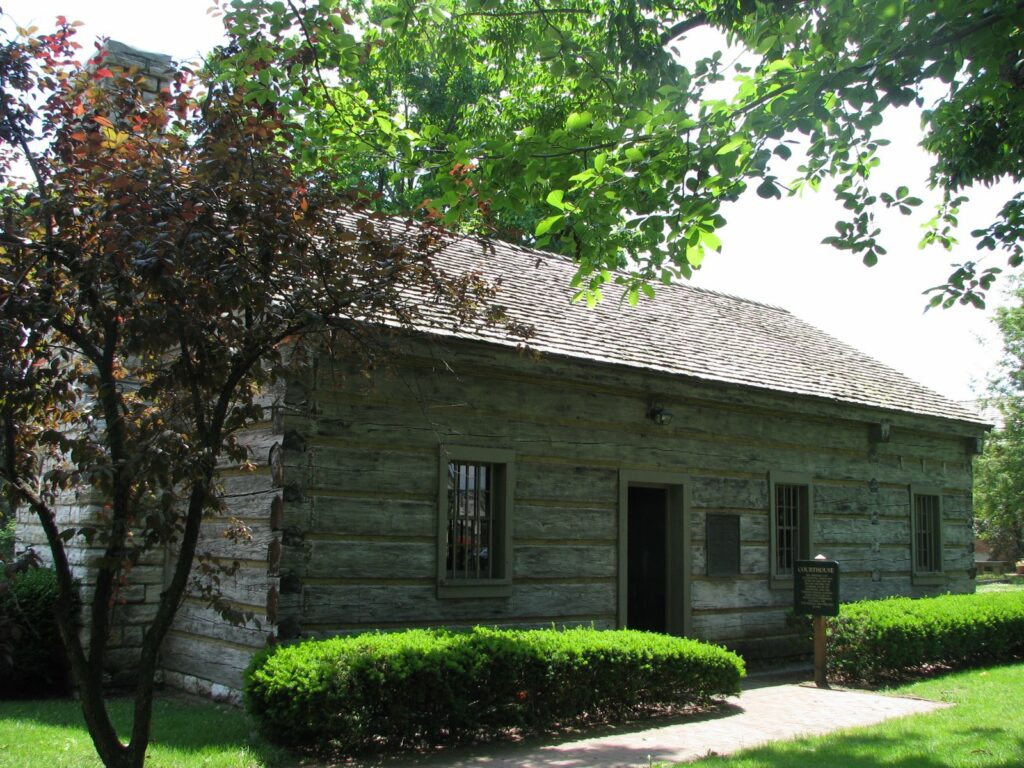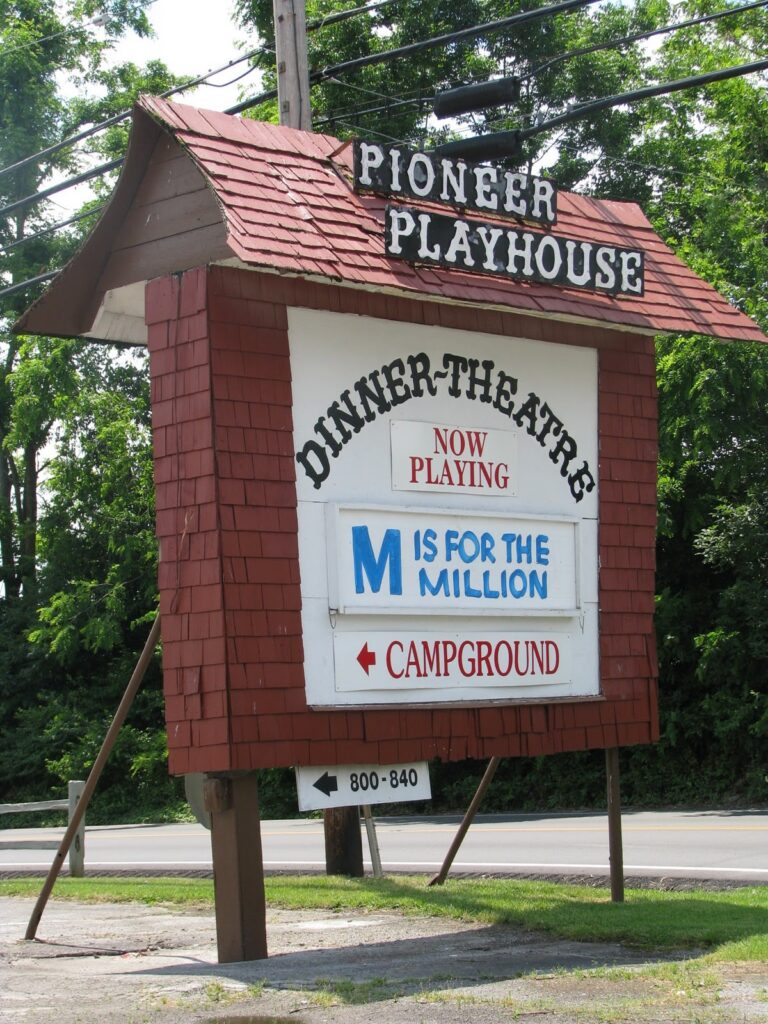On a 2.5 acre plot of land in Danville sits a house steeped in Kentucky history. It is owned by a consortium of preservation-minded groups who purchased the property at auction earlier this year in order to save this important part of history. With preservation easements added, it is again for sale. Details of this wonderful, historic structure are available at willisgreenhouse.com.
This is the story of those who lived here.
While surveying a portion of central Kentucky, Willis Green found several thousand acres of land which pleased him greatly. He named his property Waveland after the “undulating terrain.” And it was here that he built his magnificent home around 1800 on the land which was held by the Green family nearly 130 years.
Willis Green
 |
Headstone of Willis Green.
Photo by Yvonne at Findagrave.com. |
The patriarch of this important Kentucky family was born around 1754 in Shenandoah County, Virginia, to Duff Green and Ann Willis. His maternal grandfather was Col. Henry Willis, the founder of Fredericksburg Virginia. But Willis was not content to remain in Virginia. He instead followed the call to head west into the wilderness of Kentucky.
Willis Green married fellow Virginian Sarah Reed on December 23, 1783, in “one of the first Christian marriages ever solemnized on Kentucky soil.” Together they located in a smaller home on Green’s acreage which was believed to have been located about 500 yards northwest of the historic site. Their fruitful marriage would yield a dozen children, each being born on the property.
It’s no surprise that Willis Green was involved in the earliest days of Kentucky’s statehood. His proximity to Danville gave him a front row seat to the nine constitutional conventions held there. But a front row seat was not enough for a man so committed to the Commonwealth.
Established with a family in Kentucky, Willis Green travelled back across the mountains to Richmond where he represented Kentucky County in the House of Delegates. Like so many Kentuckians of his day, Green believed in Jeffersonian democracy and pursued a more local governance for those Virginians living west of the Appalachians.
To these ends, Green participated in no fewer than two of the Kentucky Constitutional Conventions. His service included nearly thirty years as the Clerk of Lincoln County (1783-1813), with such term punctuated by three absences while he served as a judicial clerk twice for the Supreme Court of the Kentucky District and once for the Danville District Court. He was also involved in the Danville Political Club – a highly influential organization in which men discussed, and likely resolved, many issues of the day. Additionally, Willis Green served as one of the original trustees of the Transylvania Academy which was first located in Danville prior to its relocation to Lexington as the Transylvania College.
Willis Green departed this earth in 1813, leaving a life estate in Waveland to Sarah. Upon her death in 1816, the property was sold to their son, Judge John Green.
Judge John Green
 |
Headstone of Judge John Green.
Photo by Yvonne at Findagrave.com. |
John Green was the eldest son born to Willis and Sarah (Reed) Green, having been born in 1787. He studied the law under Henry Clay and was an aide-de-camp to Kentucky’s first governor, Isaac Shelby.
Governor Shelby was both the first and the fifth governor of Kentucky. During his second administration, the nation warred with Britain in the War of 1812. During this conflict, Shelby designated a number of important Kentuckians as his “aides-de-camp,” titles given to those attending a general officer. In Kentucky, aides-de-camp to the Commonwealth’s Governor are more regularly known as Kentucky Colonels. Among this honorable order, Judge John Green was among the first.
Judge Green served multiple terms in both houses of the General Assembly and was elected Circuit Judge. His first marriage was to Sarah Fry, the daughter of leading educator Joshua Fry. A second marriage was to Mary Marshall, the daughter of Capt. Thomas Marshall and niece of Supreme Court Justice John Marshall.
He was a “judge” by virtue of his service as a Circuit Judge. He also helped to establish both Centre College and the Kentucky School for the Deaf. When Henry Clay would visit the regions south of the Kentucky River, he would often stay at Waveland in the home of his friend, Judge Green.
Judge John Green died in 1838. Waveland, however, would remain within the family.
Dr. William Craig
Martha Eleanor Green, the youngest daughter of Willis and Sarah (Reed) Green, married Dr. William Craig. Craig, a native of Augusta County, Virginia, matriculated through Washington College (now Washington and Lee University) and learned medicine at Transylvania College and the School of Medicine in Philadelphia.
Dr. Craig purchased his wife’s family’s estate upon the passing of her brother, Judge John Green in 1838.
Though a successful physician, Dr. Green was also active in the community having served in the state legislature and as president of the Branch Bank of Kentucky at Danville. A notable addition to Dr. Craig’s vitae was his role as one of the first trustee’s on the board of Centre College. He also helped to organize Anaconda, Danville’s literary and social club, in December 1839.
When Dr. Craig died in 1854, his son – “a capable gentleman farmer” – became the owner of Waveland.
John James Craig
 |
Headstone of John J. Craig.
Photo by Karen at Findagrave.com. |
After his father died, John James Craig acquired the estate on the outskirts of Danville known as Waveland. Born in 1832, J. J. Craig lived at Waveland for all of his days except the first six years of infancy. To be sure, he must have also fallen for the undulating terrain which had first captivated his grandfather. J.J. Craig married Amanda Goodloe on December 18, 1855 in the bride’s native Madison County.
Mr. Craig was widowed in 1908 when Amanda died and he passed away in 1914. The couple is buried at the Bellevue Cemetery in Danville.
Outside the Family
According to the property’s National Register application, the property was sold outside the Green-Craig family for the first time in 1924 when it was acquired by Mr. J.D. Erskine. The chain of family members who owned the property during the intervening 130 years since Willis Green first fell in love with the rolling terrain was broken.
Waveland passed through the Erskine and Benedict families with little change. Martin and Dorotha Thompson purchased Waveland at the end of July 1975. It was entered on the National Register May 6, 1976.
After Mr. Thompson passed away the home was abandoned and has since deteriorated to its present condition.
Other Notable Occupants of Waveland
And though they didn’t own Waveland, it was the home to a series of other notable members of the Green family. Chief among this list was the youngest son of Willis and Sarah (Reed) Green, Lewis Warner Green.
Born at Waveland in 1806, Lewis Warner Green was the youngest of Willis and Sarah’s twelve children. He was considered an orphan with his parents both having passed by the child’s tenth birthday. He was cared for by his much older brother and neither his stature nor studies suffered. His early tutelage was under both Joshua Fry and Duncan F. Robertson, but he was sent to the classical school (Buck Pond) in Woodford County at age thirteen.
He followed a short stint at Transylvania College in Lexington by attending Danville’s newly opened Centre College in 1822. In 1824, he was one of two members of Centre’s first graduating class.
Lewis Warner Green then went on to study law under his brother who had raised him, Judge John Green. Lewis must have found the practice of law unappealing, for he had soon shifted his professional training to medicine under the direction and advice of Dr. Ephraim McDowell.
Neither the law nor medicne nor theology retained Lewis’ interest professionally; his attendance at Princeton Theological Seminary lasted only a year. Even so, he would become a minister ordained in the Presbyterian Church. His return to Danville in 1832 was coupled with a professorship in both “belles-lettres and political economy.”
A two-year sabbatical through three European universities gave Lewis Green further opportunity to study theology, language, literature, Biblical archaeology, and natural sciences, before returning to the United States. Within a year, he would return to Danville as vice-president of Centre and as co-pastor of Danville Presbyterian Church.
In 1840, however, Rev. Dr. Green would leave Danville for another seventeen years passing through academia and pastorals in Pennsylvania, Maryland, and Virginia. The familial call to Kentucky was strong and he returned here, first for a year as President of Transylvania University, and finally on January 1, 1858, to the presidency of Centre College.
Under Green’s leadership, Centre succeeded despite the hardships incumbent with an ongoing Civil War. A drop in attendance was never accompanied by a cancellation of classes. In nearby Perryville, a great battle of that War raged in October 1862 and after which battle Green’s campus was utilized as a hospital by both Armies.
The following May, 1863, Rev. Dr. Lewis Warner Green would die of illness. After his passing, the faculty of Centre passed a resolution calling Rev. Dr. Green “one of [Centre’s] oldest and warmest friends.”
Some of the most influential leaders in the history of Centre College, of Danville, and of the Commonwealth have called Waveland home. It is a treasure in Kentucky’s history.
 |
Willis Green House nestled in a Danville, Ky. neighborhood.
Photo: Blue Grass Trust |
For more photographs, please visit willisgreenhouse.com.





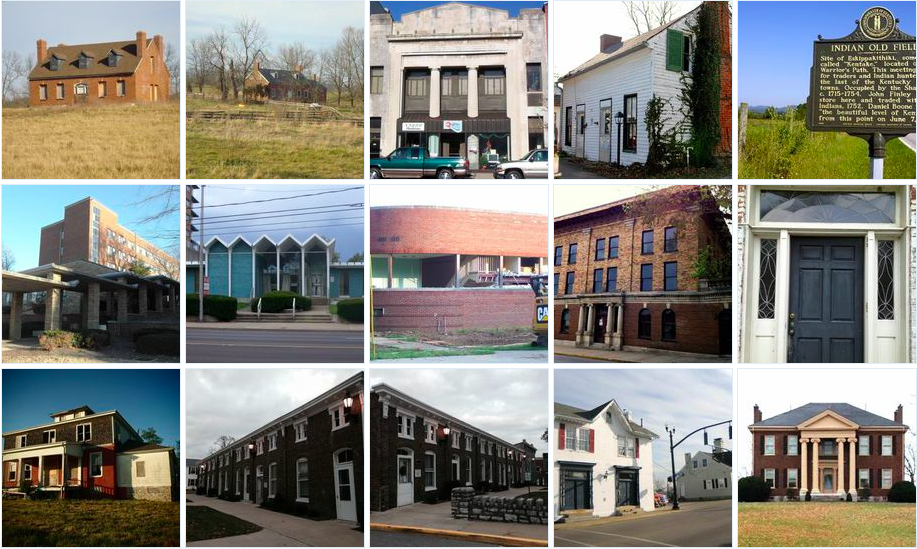
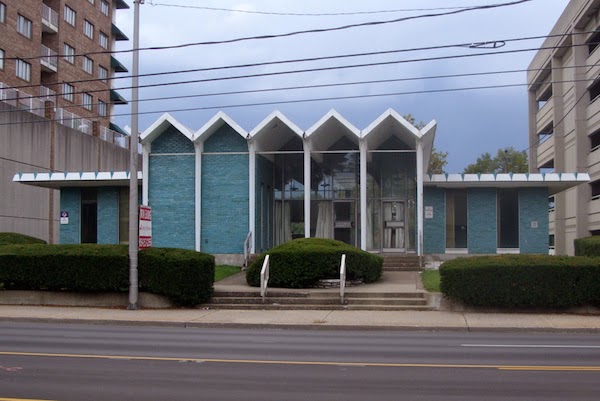%2BBank%2B(Photo%2Bby%2BRachel%2BAlexander).jpg)
.jpg)








